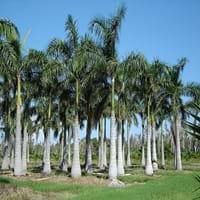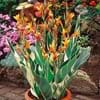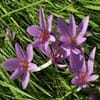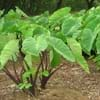Life Span
Perennial
Perennial
Type
Bulb or Corm or Tuber
Palm or Cycad
Origin
Latin America and the Caribbean, Central America, South America
Australia
Types
Canna Altensteinii, Canna Indica Purpurea
Coconut and Dates
Number of Varieties
Not Available
Habitat
Subtropical climates, Tropical regions, Warmer regions
tropical environments
USDA Hardiness Zone
8-11
Not Available
AHS Heat Zone
12-1
Not Available
Sunset Zone
21,22
Not available
Habit
Upright/Erect
Upright/Erect
Minimum Height
Not Available
Minimum Width
Not Available
Flower Color
White, Yellow, Red, Orange, Pink, Rose, Salmon
White, Yellow
Flower Color Modifier
Bicolor
Bicolor
Fruit Color
Green, Tan, Brown
Orange, Orange Red
Leaf Color in Spring
Yellow, Red, Green, Purple, Gray Green, Dark Green, Burgundy
Brown
Leaf Color in Summer
Light Green
Not Available
Leaf Color in Fall
Several shades of Green
Not Available
Leaf Color in Winter
Light Green
Not Available
Leaf Shape
Elliptic
feather-shaped
Plant Season
Spring, Summer, Fall
Spring, Summer, Fall, Winter
Sunlight
Full Sun, Partial Sun
Bright Indirect Sunlight
Growth Rate
Fast
Not Available
Type of Soil
Clay, Loam, Sand
Light, Loose, Moist
The pH of Soil
Acidic, Neutral, Alkaline
Acidic
Soil Drainage
Average
Well drained
Bloom Time
Indeterminate
All year
Repeat Bloomer
Yes
Not Available
Tolerances
Drought
Not Available
Where to Plant?
Container, Ground, Pot
Ground, Pot
How to Plant?
From bulbs, Seedlings
Rooted stem cutting, Seedlings
Plant Maintenance
Medium
Low
Watering Requirements
Keep the ground moist but not water-logged, Requires regular watering
Average Water Needs, Needs 2-3 times watering per week, Water daily during growing season
In Summer
Lots of watering
Lots of watering
In Spring
Moderate
Moderate
In Winter
Average Water
Less Watering
Soil pH
Acidic, Neutral, Alkaline
Neutral
Soil Type
Clay, Loam, Sand
Not Available
Soil Drainage Capacity
Average
Well drained
Sun Exposure
Full Sun, Partial Sun
Not Available
Pruning
Remove damaged leaves, Remove dead leaves
Remove damaged leaves, Remove dead branches, Remove dead leaves, Remove old, faded fronds
Fertilizers
All-Purpose Liquid Fertilizer
Boron, EDTA iron, Maganese, Magnesium, Nitrogen, Potassium
Pests and Diseases
Red blotch
Red blotch
Plant Tolerance
Drought
Not Available
Flower Petal Number
Single
Not Available
Edible Fruit
No
Not Available
Fragrant Flower
Yes
Not Available
Fragrant Fruit
No
Not Available
Fragrant Leaf
No
Not Available
Fragrant Bark/Stem
No
Not Available
Showy Foliage
Yes
Not Available
Showy Bark
No
Not Available
Foliage Texture
Bold
Not Available
Foliage Sheen
Not Available
Glossy
Invasive
No
Not Available
Self-Sowing
No
Not Available
Attracts
Butterflies, Insects
Bees, Bugs, Insects, Mice, Rats, Rodents
Allergy
Not Available
Asthma, Rhinitis
Aesthetic Uses
Beautification, Bouquets, Landscape Designing, Showy Purposes
Decorating walls, Landscape Designing, Showy Purposes
Beauty Benefits
Not Available
Making cosmetics
Environmental Uses
Air purification
Air purification, Shadow Tree
Medicinal Uses
Diuretic
Aging, Brain disease, Cancer, Cyanide Poisoning, High blood pressure, High cholestrol, Malaria, Metabolic disorders, Vitamin A, Weight loss
Part of Plant Used
Flowers, Leaves, Root, Seeds
Fruits, Leaves, Tree trunks
Other Uses
Decoration Purposes, Showy Purposes, Used As Food, Used as Ornamental plant, Used in paper industry
Biodiesel, For making oil, Jelly, Sometimes used for making wine, Used in salads, Wax
Used As Indoor Plant
Yes
No
Used As Outdoor Plant
Yes
Yes
Garden Design
Bedding Plant, Container, Feature Plant, Foundation, Mixed Border, Tropical, Water Gardens
Tropical
Botanical Name
CANNA
ARCHONTOPHOENIX
Common Name
Canna, Canna Lily
Palm
In German
Canna Lilie
Palme
In Spanish
Canna lirio
Palma
In Greek
Canna κρίνος
Παλάμη
In Portuguese
Canna
Palma
In Polish
Canna lilia
Palma
In Latin
Canna lilium
Vero
Phylum
Embryophyta
Magnoliophyta
Class
Liliopsida
Liliopsida
Order
Zingiberales
Arecales
Family
Cannaceae
Arecaceae
Genus
Canna
Archontophoenix
Clade
Angiosperms, Commelinids, Monocots
Angiosperms, Commelinids, Monocots
Tribe
Not Available
Areceae
Subfamily
Not Available
Arecoideae
Difference Between Canna and Palm Tree
If you are confused whether Canna or Palm Tree are same, here are some features about those plants to help you choose better. Many people think that these two plants have the same characteristics, but one can see Canna and Palm Tree Information and learn more about it. Fertilizers required for proper growth of Canna are All-Purpose Liquid Fertilizer, whereas for Palm Tree fertilizers required are Boron, EDTA iron, Maganese, Magnesium, Nitrogen and Potassium. Hence, one should know the basic difference between Canna and Palm Tree if you are planning to have them in your garden to enhance its beauty.
<
Flowering PlantsImportance of Canna and Palm Tree
Want to have the most appropriate plant for your garden? You might want to know the importance of Canna and Palm Tree. Basically, these two plants vary in many aspects. Compare Canna and Palm Tree as they differ in many characteristics such as their life, care, benefits, facts, etc. Every gardener must at least have the slightest clue about the plants he wants to plant in his garden. Compare their benefits, which differ in many ways like facts and uses. The medicinal use of Canna is Diuretic whereas of Palm Tree is Aging, Brain disease, Cancer, Cyanide Poisoning, High blood pressure, High cholestrol, Malaria, Metabolic disorders, Vitamin A and Weight loss. Canna has beauty benefits as follows: Not Available while Palm Tree has beauty benefits as follows: Not Available.
Compare Facts of Canna vs Palm Tree
How to choose the best garden plant for your garden depending upon its facts? Here garden plant comparison will help you to solve this query. Compare the facts of Canna vs Palm Tree and know which one to choose. As garden plants have benefits and other uses, allergy is also a major drawback of plants for some people. Allergic reactions of Canna are Not Available whereas of Palm Tree have Asthma and Rhinitis respectively. Having a fruit bearing plant in your garden can be a plus point of your garden. Canna has no showy fruits and Palm Tree has showy fruits. Also Canna is not flowering and Palm Tree is flowering. You can compare Canna and Palm Tree facts and facts of other plants too.





